
Lemlair House is a mansion house in the parish of Kiltearn, Ross-shire, in the Highland council area of the Scottish Highlands. [1]

Lemlair House is a mansion house in the parish of Kiltearn, Ross-shire, in the Highland council area of the Scottish Highlands. [1]
A 17th century manuscript of the Clan Mackenzie claims that the Mackenzies burnt the Clan Munro lands of Lemlair in the aftermath of the Battle of Logiebride in 1597. [2] The lands of Lemlair were made into a barony direct from the Crown in 1643 for Colonel John Munro of Lemlair who was a leading supporter of the National Covenant and who opposed Charles I of England's church innovations. [1] In 1738 the lands of Lemlair reverted to the chief of the Clan Munro and later went through a period of Mackenzie ownership when it was connected with the neighboring Mountgerald. [1] It was later bought back by another member of the Munro family. [1]
The name "Lemlair" is thought to come from the Gaelic for "a bare place suitable for grazing horses".
In 1859, it was bought from Sir Charles Munro of Foulis by "Red John" Munro and it was Red John's grandson, another John, who rebuilt it into the present mansion with its internal fittings featuring the Munro eagle in 1876. He moved into the house in 1879 and it has had only three owners since then.
The mansion is set in 6 acres (24,000 m2) of grounds. The building features a Rennie Mackintosh tiled fireplace and mantelpiece, a snooker room, a tiled-floor veranda overlooking the firth, a tennis court, eight bedrooms, stained-glass windows and Munro clan features such as a fireplace depicting the famous eagle emblem. The house has recently been extensively refurbished including exterior woodwork to bring the house back to original standard.
The area boasts excellent fishing, shooting and stalking and countryside walks.
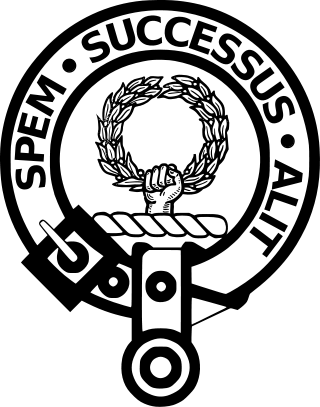
Clan Ross is a Highland Scottish clan. The original chiefs of the clan were the original Earls of Ross.
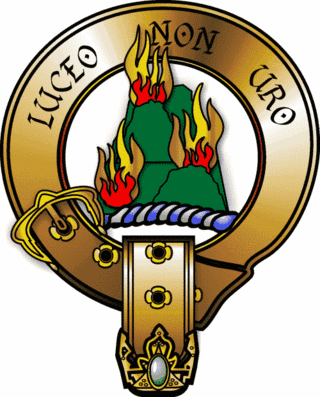
Clan Mackenzie is a Scottish clan, traditionally associated with Kintail and lands in Ross-shire in the Scottish Highlands. Traditional genealogies trace the ancestors of the Mackenzie chiefs to the 12th century. However, the earliest Mackenzie chief recorded by contemporary evidence is Alexander Mackenzie of Kintail who died some time after 1471. Traditionally, during the Wars of Scottish Independence, the Mackenzies supported Robert the Bruce, but feuded with the Earls of Ross in the latter part of the 14th century. During the 15th and 16th-centuries the Mackenzies feuded with the neighboring clans of Munro and MacDonald. In the 17th century the Mackenzie chief was made Earl of Seaforth in the peerage of Scotland. During the Scottish Civil War of the 17th century the Mackenzies largely supported the Royalists. During the Jacobite rising of 1715 the chief and clan of Mackenzie supported the Jacobite cause. However, during the Jacobite rising of 1745 the clan was divided with the chief, Kenneth Mackenzie, Lord Fortrose, supporting the British-Hanoverian Government and his relative, George Mackenzie, 3rd Earl of Cromartie, supporting the Jacobites.

Castle Chanonry of Ross, also known as Seaforth Castle, was located in the town of Fortrose, to the north-east of Inverness, on the peninsula known as the Black Isle, Highland, Scotland. Nothing now remains of the castle. The castle was also known as Canonry or Chanonrie of Ross, the former county.

Strome Castle is a ruined castle on the shore of Loch Carron in Stromemore, 3.5 miles south-west of the village of Lochcarron, on the headland between Loch Carron and Loch Kishorn, on the west coast of the Scottish Highlands.

Balconie Castle lay in the parish of Kiltearn, about 1⁄2 mile east of the village of Evanton in the Highlands of Scotland.
The Munros of Milntown were a family cadet branch of the Highland Clan Munro. As the earliest recorded cadet branch of the Munro chiefs, the Munros of Milntown were the 'senior' cadet branch of the clan, and spawned many cadet branches. They were frequently recorded as 'Monro' as well as Munro. The Munros of Milntown are notable for being involved in events concerning the history of the late Middle Ages in the Scottish Highlands.

The Battle of Bealach nam Broig was a battle fought between Scottish clans from the lands of north-west Ross, against north-eastern clans of Ross who supported the Earl of Ross. The actual date of the battle is debated, it probably occurred in 1452 but the Conflicts of the Clans suggests a date as early as 1299.

The Battle of Drumchatt was a Scottish clan battle that took place in 1497. The Clan Mackenzie and possibly the Clan Munro defeated the Clan MacDonald of Lochalsh at Drumchatt (Druimchat) or "the Cat's Back", a ridge to the southeast of Strathpeffer.

The Battle of Logiebride or Logie-Riach, also known as a Tumult in Ross was more of a small skirmish rather than an actual battle. The disturbance is said to have taken place on 4 February 1597 at the Logie Candlemas market near Conan House between men of the Clan Mackenzie against men of the Clan Munro and the Bain family of Tulloch Castle.
Robert Mor Munro, 15th Baron of Foulis, and 18th chief of the Clan Munro was a 16th-century Scottish chief. He was known as Robert Mor on account of his large stature. He was the eldest son of Robert Munro, 14th Baron of Foulis. Although this Robert Munro is traditionally 15th Baron and 18th overall chief of the clan, he is only the 8th Munro chief that can be proved by contemporary evidence.
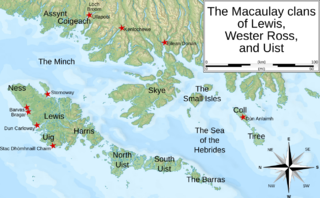
The Macaulay family of Uig in Lewis, known in Scottish Gaelic as Clann mhic Amhlaigh, were a small family located around Uig on the Isle of Lewis in the Outer Hebrides of Scotland. There is no connection between the Macaulays of Lewis and Clan MacAulay which was centred in the Loch Lomond area, bordering the Scottish Highlands and Scottish Lowlands. The Macaulays of Lewis are generally said to be of Norse origin because of the etymology of their surname and also because of the islands' Viking Age past. However, a recent analysis of the Y-DNA of men with Scottish surnames has shown that a large number of Hebridean Macaulays are of Irish origin. In the 17th century, however, tradition gave the Macaulays an Irish origin. By the end of the 16th century the dominant clan on Lewis was Clan Macleod of The Lewes. Other notable Lewis clans were the somewhat smaller Morrisons of Ness and the even less numerous Macaulays of Uig. The Macaulays were centred in the area surrounding Uig on the western coast of Lewis, and had a deadly, long-standing feud with the Morrisons, whose lands were located on the northern coast around Ness. Today the Lewis surname Macaulay is considered to be a sept name of the Macleods of Lewis. There are two other nearby clans of Macaulays who may, or may not, be connected to the Lewis clan—the Wester Ross Macaulays, and the Uist MacAulays.
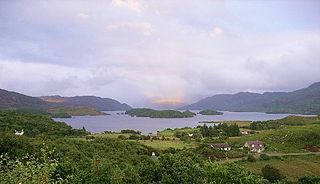
The Battle of Morar was a Scottish clan battle fought in 1602, near Loch Morar, in the Scottish Highlands. It was fought between the Clan MacDonell of Glengarry against the Clan Mackenzie who were supported by men of the Clan Ross and Andrew Munro of Novar.
Alexander Mackenzie, was a Scottish historian, author, magazine editor and politician. He was born on a croft, in Gairloch. He had little opportunity for education and initially earned his living as a labourer and ploughman. In 1861 he became apprenticed in the clothes trade selling Scottish cloth in Colchester. In 1869 he settled in Inverness, where he and his brother set up a clothes shop in Clach na Cudainn House. From his business premises he derived his nickname 'Clach na Cudainn' or simply 'Clach'. He later became an editor and publisher of the Celtic Magazine, and the Scottish Highlander. Mackenzie wrote numerous clan histories. He was a fellow of the Society of Antiquaries of Scotland. A founder member of the Gaelic Society of Inverness, Mackenzie was elected an 'Honorary Chieftain' in 1894.
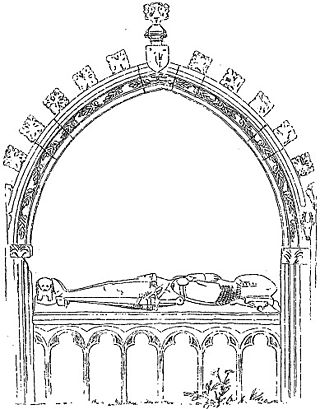
Kenneth Mackenzie, traditionally reckoned 7th of Kintail and nicknamed Coinneach a'bhlair, was a Highland chief, being head of the Clan Mackenzie.
Sir Hector Munro, 2nd Baronet of Foulis was a Scottish noble and clan chief of the highland Clan Munro. He is also by tradition the 20th Baron and 23rd overall chief of the clan. However, he is actually the 13th chief of the Clan Munro who can be proved by contemporary evidence.
Sir William Munro of Foulis was a Scottish Knight and Scottish clan chief of the highland Clan Munro. He is by tradition the 12th Baron of Foulis and 15th overall chief of the clan. However, he is actually only the 5th chief of the Clan Munro who can be proved by contemporary evidence.
Leod Macgilleandrais is purported to have been a 14th-century Scotsman, who lived in the north-west of Scotland. He is known from clan traditions, which date to the late 17th century. According to these traditions, Leod was a follower of the Earl of Ross, and that he was an enemy of the Mackenzies of Kintail. He is said to have captured one of the early Mackenzie chiefs, and was then later killed by the slain chief's son sometime in the 14th century. His memory is preserved in the place where he is said to have been slain. According to at least one version of the tradition, Leod was survived by a son named Paul. Several historians in 19th and early 20th centuries equated this son to Paul Mactire.

Clan Munro is a Highland Scottish clan. Historically the clan was based in Easter Ross in the Scottish Highlands. Traditional origins of the clan give its founder as Donald Munro who came from the north of Ireland and settled in Scotland in the eleventh century, though its true founder may have lived much later. It is also a strong tradition that the Munro chiefs supported Robert the Bruce during the Wars of Scottish Independence. The first proven clan chief on record however is Robert de Munro who died in 1369; his father is mentioned but not named in a number of charters. The clan chiefs originally held land principally at Findon on the Black Isle but exchanged it in 1350 for Estirfowlys. Robert's son Hugh who died in 1425 was the first of the family to be styled "of Foulis", despite which clan genealogies describe him as 9th baron.

The Battle of Drumchatt, or Druim-a-Chait, was a Scottish clan battle claimed by non-contemporary historians to have taken place in the year 1501 near Strathpeffer, in the Scottish Highlands. It was allegedly fought between the Clan Mackenzie and the Clan Munro. Mackenzie chronicles have claimed a signal victory.

The Battle of Lagabraad, also known as the Battle of Logiebride, or Lagebread, was a Scottish clan battle that took place in 1480, or 1483, and was fought between the Clan Donald and the Clan Mackenzie of the Scottish Highlands.
MacPhail's 1914 book contains a transcript of John Mackenzie of Applecross's 17th century MS History of the Mackenzies